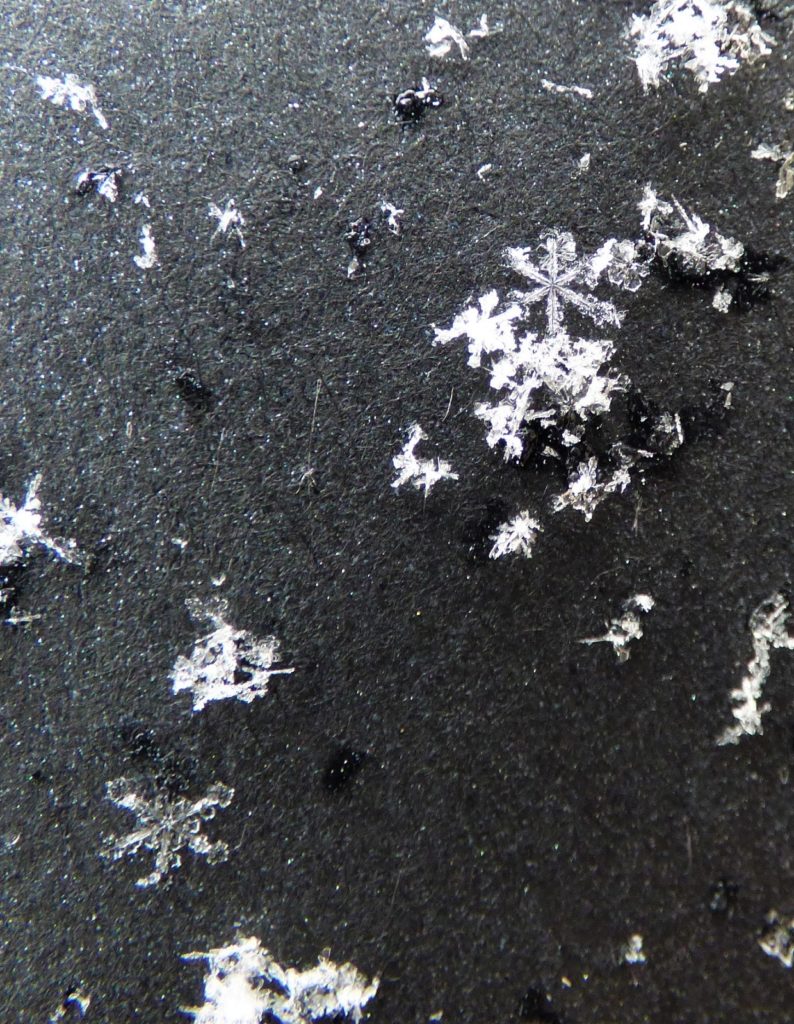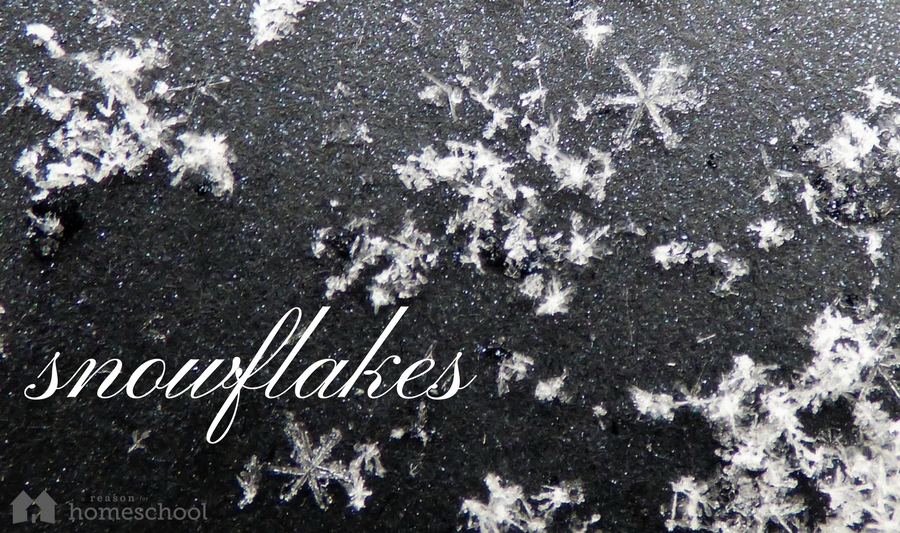We don’t get lots of big snows in my neck of the woods, so any occasion of puffy white flakes falling from the sky makes me giddy. I’m like a kid with my fingers crossed for a snow day from school.
Just this week, we had a beautiful flurry that covered the ground in moments. I could see the big flakes falling and swirling, and I thought, “I should go out and catch some.” I have always enjoyed looking at the beautiful photos of snowflakes in nature magazines, so I grabbed my camera, my magnifying glass, and a sheet of black paper for the flakes to fall onto.
You know what astounded me? They were completely visible to the naked eye. I even photographed them without magnifying them. I felt like a real (and very cold) National Geographic photographer. You know what this means? You and your kids can do it too!

Get a sheet of black paper. I put mine on a tray, because the wind was blowing too hard to keep the paper still. Then I simply stood where the wind would splat them onto my background. When I saw one that was particularly lovely, I snapped it with my camera. It is not a fancy camera and I just used the macro button for close-up photos. Later I took them to my computer and looked at them. They are not Nat Geo quality, but I never dreamed that I could take pictures of snowflakes! Without using any special photo editing programs, I just cropped the images to make certain flakes easier to see.
So, now you know: next time it snows, bundle up with the kids and run outside with some black construction paper and see what falls from heaven!

Now let’s talk a little science. What we call snowflakes are actually snow crystals. Snow flakes could be what you call the hundreds that collide and stick together and make a big fluffy puff with no real distinguishable shape. I saw lots of these. Sometime you will see ones shaped like columns or needles; these are snow crystals also, just not the six-sided kind we associate with the iconic snowflake shape. I saw all kinds fall onto my paper.

How are snow crystals created? They happen when water vapor (gas) in the air freezes into ice. It is not liquid water that freezes — that’s sleet. The water vapor freezes onto a small airborne particle, like a bit of dust, and then more and more water vapor freezes to the crystal, creating an ornate pattern. Temperature and humidity affect the shape of the crystals, so if you’re looking at snow and not seeing types that interest you, try looking again the next time snow falls. Shapes can even change over the course of the day.

I’ve always heard that no two snowflakes — sorry…that’s crystals! — are ever the same. Well, there are 35 different types of crystal shapes from six long arms to fine needles. But within these groups are the individuals that are just that: individual. The path that the crystal takes through the cloud is what forms its shape. So even in a cloud forming mostly star shaped crystals, they would all be different because no two crystals will ever take the exact same path.

Kenneth Libbrecht, physics professor at California Institute of Technology and avid snowflake photographer, says the incredible variances of snow crystals has “been a mystery for about 75 years and it’s still unsolved.” When asked if there could be duplicates he replied, “It’s like shuffling a deck and getting the exact same shuffle for 52 cards,” Libbrecht said. “You could shuffle every second for the entire life of the universe, and you wouldn’t come close to getting two of the same.”
“Nature’s full of genius, full of divinity,
so that not a single snowflake escapes its fashioning hand.”
Henry David Thoreau
Want to amaze your kids (and yourself) with the incredible variety of snow crystals?
Click here for Kenneth Libbrecht’s photo gallery on YouTube.
Another way to stave off boredom (and inspire creativity) on these frigid days:
designing virtual snowflakes is fun activity the whole family will enjoy!
and …
CLICK HERE to read more posts from Ms. Sam!!!
